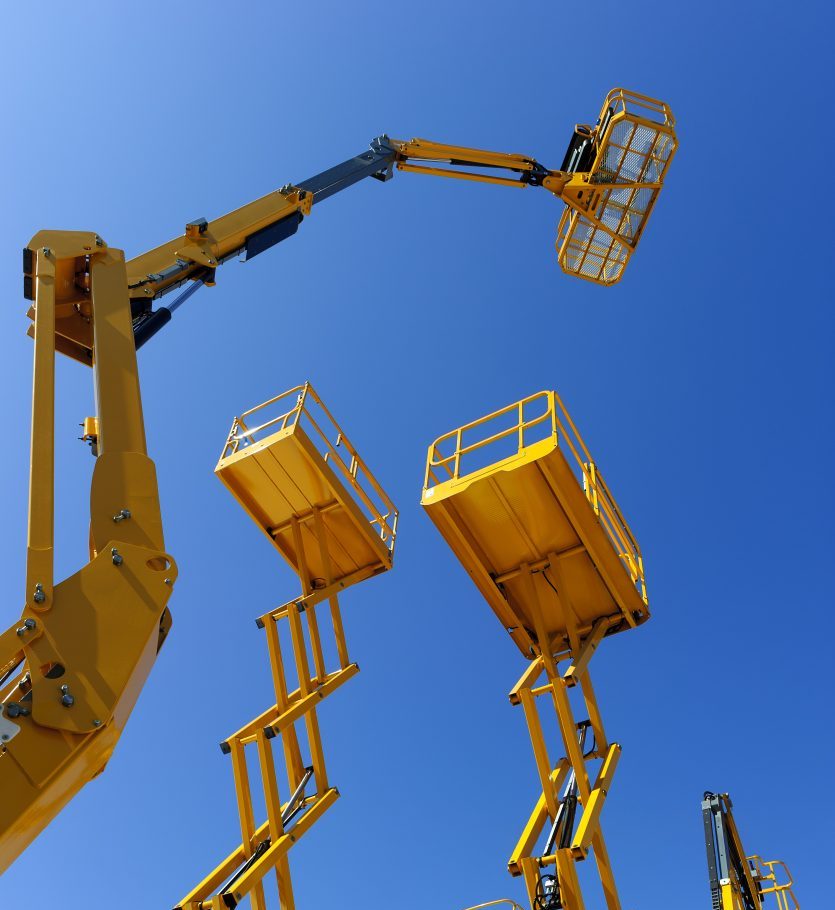Aerial lifts are vehicle-mounted, boom-supported aerial platforms, such as cherry pickers, bucket trucks, Scissor lifts, Boom lifts and Telehandlers used to access utility lines and other above ground job sites. The major causes of fatalities are falls, electrocutions, and collapses or tip overs. Workers must take measures to ensure the safe use of aerial lifts. Lifts are a useful jobsite tool but can be very dangerous. Follow the below safe practices to ensure your safety and the safety of those around the jobsite.
- Make sure that workers who operate aerial lifts are properly trained in the safe use of the equipment. If you are not certified/trained to operate an aerial lift or are not comfortable working from a lift. Please communicate with your foremen or safety manager.
- Maintain and operate elevating work platforms according to the manufacturer’s instructions.
- Never override hydraulic, mechanical, or electrical safety devices.
- Never move the equipment with workers in an elevated platform unless this is permitted by the manufacturer.
- Do not allow workers to position themselves between overhead hazards, such as joists and beams, and the rails of the basket. Movement of the lift could crush the worker(s).
- Maintain a minimum clearance of at least 10 feet, or 3 meters, away from the nearest energized overhead lines.
- Always treat power lines, wires and other conductors as energized, even if they are down or appear to be insulated.
- Use a body harness or restraining belt with a lanyard attached to the boom or basket to prevent falling from the boom/lift
- Set the brakes and use wheel chocks when on an incline.
- Use outriggers, if provided.
- Do not exceed the load limits of the equipment. Allow for the combined weight of the worker, tools and materials.
- Never leave the plate form surface for any reason.
- Never stand on the railing of the lift basket.
- Ensure all body parts are inside the lift working area before raising or lowering the platform.
